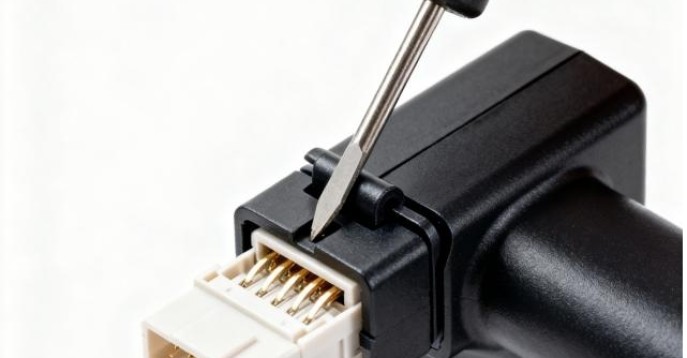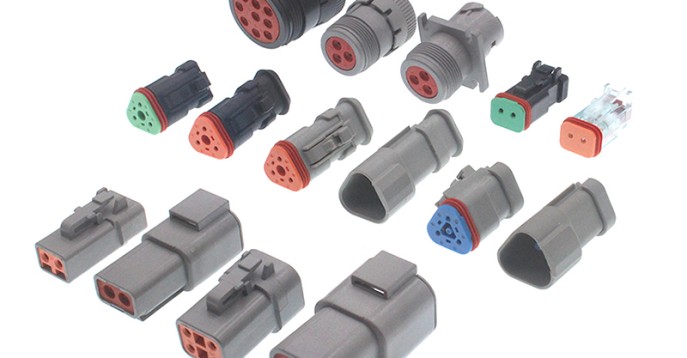With the increase of electrical functions of commercial vehicles, there are many varieties, rich configurations, various combinations of wheelbase, engine, transmission, etc., and most of them are small-batch order-based production, resulting in a multiplied variety of commercial vehicle wiring harnesses.
Therefore, the cost of wiring harnesses is high and management is difficult. The maintenance of after-sales accessories is inconvenient, and the wiring harness manufacturers need to change the process tooling frequently, which affects the delivery cycle.
Commercial vehicle wiring harnesses are mainly divided into two categories: cab wiring harness and chassis wiring harness. Cab wiring harnesses mainly include: instrument panel wiring harness, floor wiring harness, roof wiring harness, door wiring harness, front wall wiring harness, additional wiring harness, etc. The chassis wiring harness mainly includes: frame wiring harness, engine wiring harness, after-treatment wiring harness, headlight wiring harness and other additional wiring harnesses.
The main reason for the increase in the variety of wiring harnesses
● There are differences in the definition of vehicle electrical function configuration, such as electric rearview mirror, environmental monitoring, MP3/MP5, LED and other optional
● Changes in the overall layout of the vehicle, mainly including the relative positions of the battery box, after-processor, and urea tank (models above National IV) in the vehicle layout.
● Changes in the definition of vehicle configuration, mainly due to differences in transmission, engine and braking systems.
Several ways to optimize the design of wire harness
● Principle design optimization: Through principle design optimization, there is basically no correlation between cab and chassis configuration changes, that is, they do not affect each other. For example, through the VCU vehicle controller, the cab wiring harness is compatible with Cummins engines, Weichai engines, and Yuchai engines, avoiding the replacement of cab wiring harnesses and the increase in varieties due to engine changes.
● Development and optimization of electrical components: In order to meet different configuration requirements and category classifications, OEMs have multiple suppliers or different version levels for the same electrical component. Therefore, when the same component is developed, its pins and definitions are required to be unified, so as to reduce the increase in the variety of wiring harnesses. For example, the instruments of a certain OEM have 4.8-inch LCD screens, 5.2-inch large-screen LCD screens, and full LCD screen instruments for vehicle positioning. Due to the existence of different suppliers, there are differences in the PCB board structure and pin definitions during the design period. In order to reduce the increase in the variety of instrument panel wiring harnesses brought about by this, it is necessary for all suppliers to maintain consistency in the component pins and definitions.
● Function reservation design: Due to the difference in configuration, in order to realize the universal design of the wiring harness, some functions need to be reserved, so as to realize the consistency of the wiring harness and reduce the variety of wiring harnesses. For example, when a certain OEM develops models, there are two models A and B with the same layout and the same configuration requirements except for the engine. Because car A is equipped with a Weichai engine, there is one more exhaust brake solenoid valve on the frame wiring harness than that of car B equipped with Xi’an Cummins engine, and the rest are the same. In order to reduce the variety of wiring harnesses, car B can use A car For the wiring harness, use a blocking cover for the reserved exhaust brake solenoid valve connector. When car A is in use, remove the blocking cap and recycle it.
● Transition line design: due to differences in configuration and layout, reduce the variety of main wiring harnesses and increase transition lines to realize vehicle functions. Taking the 6X4 tractor of an OEM as an example, according to the analysis of configuration requirements, this model has optional side protection requirements. Due to the difference in the position of the side marker lamps and assembly requirements, when matching the side protection, a transition line for the side marker lamps is added to realize the vehicle frame. The wiring harness is common.
● Wire harness tie-back design: carry out tie-back design for some wire harnesses in order to realize the generalization of wire harnesses. Taking the models A and B of a certain OEM as an example, the total length of model A is longer than that of model B, that is to say, except for the difference in the length from the tail beam of the frame to the center of the rear axle in the X direction, the layout position, wheelbase, configuration, etc. of the two models are all different. unanimous. The frame wire harness is designed to match the A model, and when the B model uses the A model frame wire harness, it can be tied back on the inside of the longitudinal beam.
● Classification of wiring harness varieties: related parts and functions are classified and divided into wiring harness varieties to avoid changes in wiring harnesses due to different configurations. Take models A and B of an OEM as an example. Model B replaces the engine manufacturer on the basis of model A, that is, except for the engine, its layout, wheelbase, configuration, etc. are all the same. Divide the functions related to the engine into the engine and after-processing wiring harness, so that the rest of the main wiring harness can be used in common, and the change of the frame wiring harness can be avoided.
● Modular design: For those parts that are difficult to assemble but have the same local layout and are basically used in vehicles of the same type, segmented modular design can be carried out. For example, the integrated modular design of the post-processor wiring harness improves the feasibility of wiring harness assembly.














